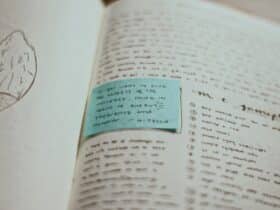I might as well just come out and say it. I really enjoy reading and watching Harry Potter movies. Although they are written for kids, I love J.K. Rowling’s writing, and it’s always a great stress reliever to pick up one of the books. So go ahead, make your jokes and digs, but I have to make myself vulnerable to this fact in order to write this post. Why? Because there are some lessons that we can learn from Professor Dumbledore about idea capture and GTD. Yep, we can even learn from children’s books.
So the basic premise behind Getting Things Done is that you capture all of our ideas, tasks, chores, etc. into collection buckets throughout your life, so as not to clutter our tiny brains with “extra processes” (aka things that keep you up at night). The preferred method for collecting these processes is by very detailed lists, but that’s neither here nor there. The important thing to get from all of this is that once you have collected all of these naggy little things onto paper, it frees your mind to focus more on tasks at hand, allowing for greater concentration and productivity.
Now, I’ve found that collecting ideas isn’t too difficult; the hard part is knowing exactly where you put them and how to process them. Enter Dumbledore and his pensieve.
The Pensieve
The pensieve is a magical device that collects thoughts and keeps them in a goblety-looking bowl. Each thought can be retrieved and viewed exactly as it happened in real life. I don’t know about you, but I’d give a thumb or pinky for something as useful as that! Seriously.
Many times ideas come to us when we least expect them. Most of the time I’m pretty good about adding ideas and tasks to proper detailed lists, and I can usually remember what I was talking about when I wrote it down. However, there are times I’ll look at a thought I scribbled down hastily a month later and wonder if I actually wrote it. It means nothing to me. Why? Because it has no context. Context is everything when it comes to collecting and remembering ideas and thoughts. When we look at our ideas, we want them to be just as vivid in our minds as the day we jotted it down.
Adding Context
So how do we add context to our ideas? I’ve got a few tips that seem to do the trick for those times when you pull up that really old notecard and wonder what the duece you were smoking when you wrote it.
1. Date/Time– One way of adding relevance is to jot the date above my idea. That way, at the very least, I can go back and check my calendar to see what exactly was going on that day. This gives my mind a little jog and sometimes does the trick all by itself.
2. The Activity– What was I doing when the idea came to me? Was anyone with me? These questions add a bit of relevance that usually help.
3. Location– I’ve found this example to be the most helpful. If I know where I was, I can probably figure out the activity too.
Although this may seem trivial, by adding a few of these things to each notecard–list, paper, etc.–that you create, you’ll probably never forget its precious meaning. You now have added context, which is crucial for memory. You’ll be able to recreate the location, time and activity you were doing when the idea came to you. You’ll be able to save time because you can pick up right where you left off when you started the idea.


















